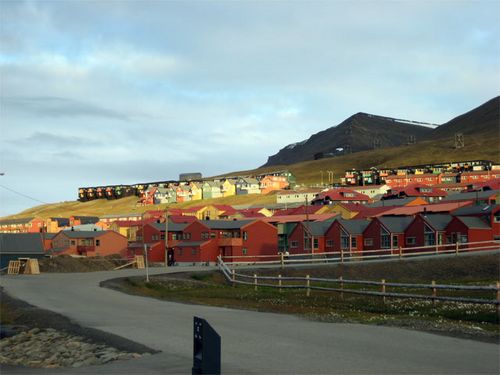As this expedition comes to a close it's time to recap and pull together the various scientific endeavors that took place in the Linne Valley during the past month. There were 2 purposes for this expedition; one was providing a rich field research experience for top level undergraduate students, and the second was the continued investigation of the glacier, lake, river system of the Linne Valley in order to better understand climate change within the valley. Svalbard being located in the high Arctic is very sensitive to climate change and because of its barren lands the evidence of climate change is readily observable. "Proxy records" (natural phenomena that are climate dependent, such as sediments, lake varves, stable isotopes, etc) are well preserved up here and hold the clues to past climates. The Svalbard REU project is most interested in climate change of the last 10,000 years, a period of time known as the HoloceneThe time period beginning at the end of the last Ice Age about 11,000 years ago and characterized by the development of human civilizations., during which time this region experienced changes in sea level, retreat and advance of glaciers, and then considerable warming within the last 90 years. Given the size of the Linne Valley along with the variety of climate change signals held within it, the Linne Valley is the perfect outdoor laboratory for a myriad of studies to suit the interests of any student. Within the Svalbard REU project sedimentation rates, glacial ablation rates, and weather data have been collected over the years to be used in the calibration of the sediment cores taken from Lake Linne. The weather data only provides a snapshot of recent weather events, but these events affect the glaciers which in turn affect the sedimentation rates into the lake. Analyzing these recent records for patterns in the sedimentation layers helps to analyze the sedimentation records of the distant past, which in turn helps us to interpret the changing climate signal over time.
This year's students had access to all this data as well as data and samples they collected. All their studies help to fill in the gaps of the story of climate change in the Linne Valley where a few of them are studying recent climate, a few are studying past climate, and a few are studying the use of new tools to study climate. For instance Antoine, Kristen and Megan are studying recent changes in climate by correlating weather data to glacial mass balance, glacial ablation, and sedimentation rates. Jesse, Emily, and Dave are interested in past climate change with their work on ice cores, magnetic properties, and biological productivity. Steve is working on a geomorphology project where he measured the altitude of the Little Ice Age moraines around the Linne Valley in order to provide an idea of the height and volume of ice during the Little Ice Age. Anthony, Maya, and Leo are applying new tools to the understanding of the climate dynamics in the Linne Valley. Anthony is using cosmogenic isotopes to date the timing of the Little Ice Age, Maya is analyzing the mineral content of sediments in the stream inputs to Lake Kongress, and Leo is using image analysis software to analyze changes in snow cover.
Their studies will add to our understanding of the processes that affect the glacial, river, lake system of the Linne Valley specifically, but at a global level will add to our understanding of Arctic climate change. By next spring they should have the answers to the questions they posed for their studies. We wish them the best in their endeavors and look forward to hearing about their results.

We are leaving Svalbard early tomorrow (Saturday) morning. For our itinerary to follow us home go to: https://www.mtholyoke.edu/proj/svalbard/participant.shtml
For additional information on climate and climate change check out these websites: Global Climate ChangeA statistically significant variation in either the mean state of the climate or the mean variability of the climate that persists for an extended period (typically 10 years or more). Climate change may result from such factors as changes in solar activity, long-period changes in the Earth's orbital elements, natural internal processes of the climate system, or anthropogenic forcing (for example, increasing atmospheric concentrations of carbon dioxide and other greenhouse gases). Student Guide from Manchester Metropolitan University. Visit Chapter 3 for information on proxy records. http://www.ace.mmu.ac.uk/Resources/gcc/references.html Real Climate: http://www.realclimate.org Climate 4 You: http://www.climate4you.com


Comments